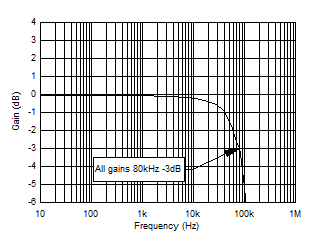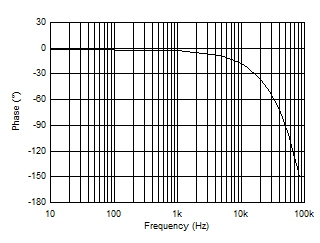TMCS1100 信号链由于离散时间采样而具有线性模拟系统中的非典型频谱响应。250kHz 的采样间隔意味着有效奈奎斯特频率为 125kHz,这将频谱响应限制在该频率以下。比该频率更高的频率成分会被混叠到更低的频谱中。
TMCS1100 带宽由受采样频率限制的整个信号链的 -3dB 频谱响应定义。下面的图 8-7 和图 8-8 展示了频率范围内的归一化增益和相位图,所有型号都具有相同的带宽和相位响应。超过 3dB 带宽水平的信号成分仍将通过信号链进行显著的基频传输,但失真水平会增加,如 所示。
 图 8-7 归一化增益,所有型号
图 8-7 归一化增益,所有型号 图 8-8 归一化相位,所有型号
图 8-8 归一化相位,所有型号